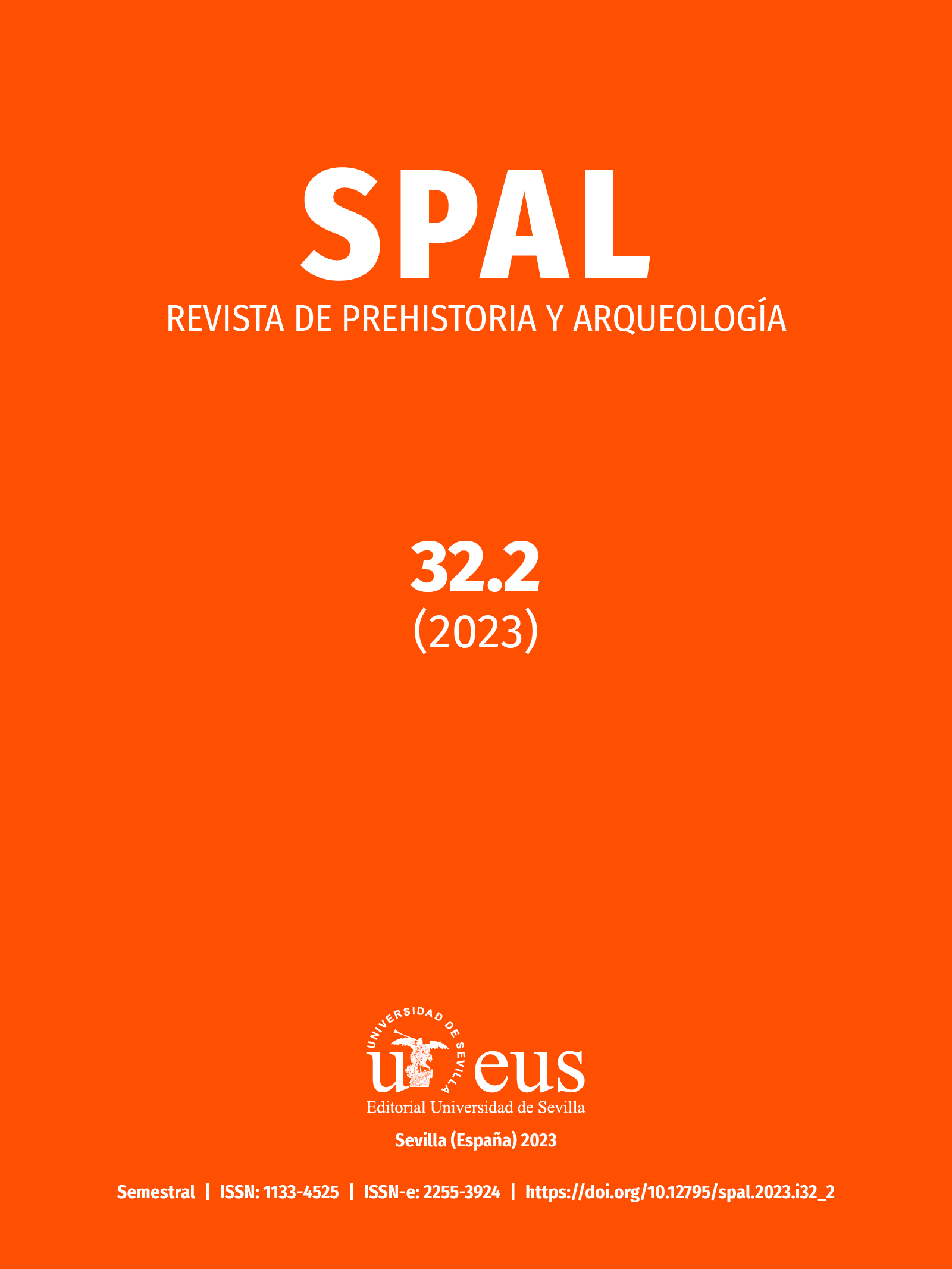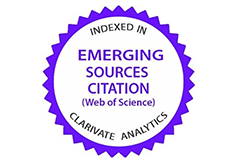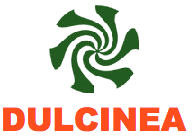Algunas precisiones sobre los macella romanos y la función del pórtico de sus fachadas
DOI:
https://doi.org/10.12795/spal.2023.i32.17Palabras clave:
macellum, pórtico de fachada, ciudades romanas, paisaje urbanoResumen
El papel tradicional otorgado al pórtico exterior del macellum, el edificio comercial más representativo del mundo romano, como elemento encargado de ocultar al propio mercado, es cuestionado. A diferencia de ello, diferentes ejemplos demuestran que este tipo de pórtico marcó la presencia de los macella en su paisaje urbano por medio de su diseño y decoración. Un análisis más preciso muestra, de hecho, que el pórtico de la fachada fue concebido como un elemento vinculado a la planificación urbana y como reflejo de un sistema integrado más complejo (ciudad, macellum, propaganda visual, ideología, cultura). Por ello, esta característica estructura arquitectónica porticada, en lugar de ocultarlo, destacaba el edificio del mercado romano en su plan urbanístico y permitió así su aprobación y homologación por parte de los ciudadanos.
Descargas
Citas
Abdelwahed, Y. E. H (2015) Egyptian Cultural Identity in the Architecture of Roman Egypt (30 BC - AD 325). Oxford: Archaeopress.
Andreau, J. (2012) “Quelques observations sur les macella”, en Chankowski, V. y Karvonis, P. (eds.) Tout vendre, tout acheter: structures et équipements des marchés antiques, Scripta Antiqua. Pessac: Ausonius éditions, pp. 75-82.
Bellini, G. R. (1994) Minturnae. L’area archeologica. Marina di Minturno: Ministero per i Beni culturali.
Bellini, G. R. (2007) “Minturnae porto del Mediterraneo”, Romula, 6, pp. 7-28.
Benaïch, M. (2022) “Tra apertura e chiusura. Percezione e impatto visivo del culto imperiale nel paesaggio urbano italiano: uno studio delle aree di accesso e delle facciate degli edifici di culto”, en Cristilli, A., De Luca, F., Di Luca, G. y Gonfloni, A. (eds.) Experiencing the Landscape in Antiquity 2, BAR Series, vol. 3107. Oxford: Archaeopress, pp. 363-371. https://doi.org/10.30861/9781407360096
Bianchini, M. (2011) “Rilievi e analisi di alcuni edifici di Minturnae. I risultati delle tesi di laurea degli studenti della Seconda Università di Napoli”, en Ghini, G. y Mari, Z. (eds.) Lazio e Sabina. 8, Atti del Convegno. Roma 30-31 marzo, 1 aprile 2011. Roma: Edizioni Quasar, pp. 465-475.
Bianchini, M. (2015), “Rilievi e ricerche a Minturnae: Basilica, Curia, Ponderarium, Terme e Teatro”, en Bellini, G. R. y von Hesberg, H. (eds.) Minturnae. Nuovi contributi alla conoscenza della Forma Urbis. Giornata di studio sui lavori a Minturnae in collaborazione con la Seconda Università degli Studi di Napoli Facoltà di Lettere e Filosofia. Roma - 29 settembre 2011. Roma: Edizioni Quasar, pp. 43-57.
Bond, S. (2022) “Maintaining the City: Enslaved Labor and Trade in Roman Philippi”, en Friesen S. J., Lychounas, M. y Schowalter, D. N. (eds.) Philippi, From Colonia Augusta to Communitas Christiana. Religion and Society in Transition. Leiden-Boston: Brill, pp. 163-182.
Broisch-Höhner, M., Kockel, V. y Ortisi, S. (2017) “Das sog. Macellum von Ostia - Radaruntersuchung 2015”, Kölner und Bonner Archaeologica (KuBA), 7, pp. 91-98.
Ciliberto, F. (2015) “Nugae sepinati I. Il macellum di Sepino: una puntualizzazione”, LANX. Scuola di Specializzazione in Beni Archeologici dell’Università degli Studi di Milano, 21, pp. 41-53.
Ciliberto, F. y Guidi, A. (2017) “Nugae sepinati II. Le pavimentazioni del macellum di Saepinum - Altilia”, en XXII Colloquio Associazione Italiana per lo Studio e la Conservazione del Mosaico (AISCOM), Matera, 16-19 marzo 2016. Tivoli: Edizioni Scripta Manent, pp. 37-48.
Cleary, S. E. (2015) “Public buildings in the cities of Roman Britain: successes or failures?”, en Brassous, L. y Quevedo, A. (eds.) Urbanisme civique en temps de crise. Les espaces publics d’Hispanie et de l’Occident romain entre le IIe et le IVe siècle, Collection de la Casa de Velázquez 149. Madrid: Casa de Velázquez, pp. 63-82.
Çokay Kepçe, S. (2018) “Yeni Araştırmalar Işığında Perge Macellumu Hakkında Gözlemler”, Mimarlar Arkeologlar Sanat Tarihçileri Restoratörler Ortak Platformu E-Dergisi, 12 (1), pp. 10-21.
Corbeill, A. (2002) “Political Movement: Walking and Ideology in Republic Rome”, en Frederick, D. (ed.) The Roman Gaze: Vision, Power and the Body. Baltimore: Johns Hopkins University Press, pp. 182-215.
Corbeill, A. (2004) Nature Embodied: Gesture in Ancient Rome. Princeton: Princeton University Press.
Cristilli, A. (1999) “Il complesso di Za Rodinu: apatouron o macellum?”, Rendiconti della Accademia di archeologia, lettere e belle arti di Napoli, 68, pp. 53-67.
Cristilli, A. (2008) “Tra evergetismo e culto imperiale. Le statue-ritratto dal macellum di Pompei”, Rivista di Studi Pompeiani, 19, pp. 35-43.
Cristilli, A. (2015) “Macellum and Imperium. The relationship between the Roman State and the market-building construction”, Analysis Archaeologica, 1, pp. 69-86.
Cristilli, A. (2018) “Reusing and kinds of reusing of a Roman commercial space in Late Antique Latin West: the macellum case study”, Analysis Archaeologica, 4, pp. 71-83.
De Angelis, F., Varano, S., Battistini, A., Di Giannantonio, S., Ricci, P., Lubritto, C., Facchin, G., Brancazi, L., Santangeli-Valenzani, R., Catalano, P., Gazzaniga, V., Rickards, O., Martínez-Labarga, C. (2020) “Food at the heart of the Empire: dietary reconstruction for Imperial Rome inhabitants”, Archaeological and Anthropological Sciences, 12: 244. Accesible en https://link.springer.com/article/10.1007/s12520-020-01194-z (consultado 10 mayo 2023).
De la Iglesia, M. A. y Márquez Moreno, C. (1991) “El mercado de Sertius en Timgad”, en L’Africa Romana, VIII Convegno, (Cagliari, 14-16 dicembre 1990). Sassari: Edizioni Gallizzi, pp. 373-383.
Demma, F. (2007) Monumenti pubblici di Puteoli. Roma: L’Erma di Bretschneider.
De Ruyt, Cl. (1983) Macellum. Marché alimentaire des Romains. Louvain: Institut supérieur d’archéologie et d’histoire de l’art, Collège Érasme.
De Ruyt, Cl. (2000) “Exigences fonctionnelles et variété des interprétations dans l’architecture des macella du monde romain”, en Lo Cascio, E. (ed.) Mercati permanenti e mercati periodici nel mondo romano - Incontri capresi di storia dell’economia antica. Capri, 13-15 ottobre 1997. Bari: Edipuglia, pp. 177-186.
Dey, H. W. (2015) The Afterlife of the Roman City. Architecture and Ceremony in Late Antiquity and the Early Middle Ages. Cambridge: Cambridge University Press.
Dobbins, J. J. (1994) “Problems of Chronology, Decoration, and Urban Design in the Forum at Pompeii”, American Journal of Archaeology, 98, pp. 629-694.
Fentress, E. (2021) “Sacred transactions. Religion and markets in Roman urbanism”, en Flohr, M. (ed.) Urban space and urban history in the Roman world. London: Routledge, pp. 179-197. https://doi.org/10.4324/9780367809331
Flohr, M. (2021) “Fora and commerce in Roman Italy”, en Flohr, M. (ed.) Urban Space and Urban History in the Roman World. London: Routledge, pp. 198-220. https://doi.org/10.4324/9780367809331
Frakes, J. F. D. (2009) Framing Public Life: The Portico in Roman Gaul. Wien: Phoibos.
Gilhaus, L. (2013) “Equites and senators as agents of change: urban culture and elite self-representation in Thamugadi and Lepcis Magna (second-third centuries A.D.)”, en Bokern, A., Bolder-Boos, M., Krmnicek, S., Maschek, D. y Page, S. (eds.) TRAC 2012: Proceedings of the twenty-second annual theoretical Roman archaeology conference, Frankfurt, 29 March - 1 April 2012. Oxford: Oxbow Books, pp. 21-36. https://doi.org/0.16995/TRAC2012_21_36
Grebien, M. (2016) “Das Macellum von Gigthis, eine Imitation der Trajansmärkte in Rom?”, en Koiner, G. y Lohner-Urban, U. (eds.) “Ich bin dann mal weg”. Festschrift für einen Reisenden Thuri Lorenz zum 85. Geburtstag. Wien: Phoibos, pp. 51-55.
Gros, P. (1996), L’architecture romaine du début du IIIe siècle av. J.-C. à la fin du Haut-Empire. 1. Les monuments publics. Paris: Picard.
Hoffelinck, A. (2020) “New light on the commercial landscape of Roman cities: the contribution of non-invasive survey”, en Flohr, M. y Monteix, N. (eds.) Archaeology and economy in the ancient world. 42. Heidelberg: Propylaeum, pp. 17-30. https://doi.org/10.11588/propylaeum.573
Hoffelinck, A. y Vermeule, F. (2021) “Ubi sunt macella? The Contribution of Non-Invasive Archaeology Survey to the Identification and Study of Roman Food Markets”, Oxford Journal of Archaeology, 40 (1), pp. 105-133. https://doi.org/10.1111/ojoa.12260
Holbrook, N. (1998) Cirencester: The Roman town defences, public-buildings and shops. Cirencester: Cotswold Archaeological Trust Ltd.
Holleran, C. (2012) Shopping in Ancient Rome: the Retail Trade in the Late Republic and the Principate. Oxford: Oxford University Press.
Işıklıkaya-Laubscher, I. R. (2011) “Mosaics in Perge: preliminary report on the mosaics of the macellum”, en Şahin, M. (ed.) 11th International colloquium on ancient mosaics, october 16th- 20th, 2009, Bursa Turkey. Mosaics of Turkey and parallel developments in the rest of the ancient and medieval world: questions on iconography, style and technique from the beginnings of mosaic until the Late Byzantine Era. Istanbul: Ege Yayinlari, pp. 467-481.
Khanoussi, M. (2003) “L’évolution urbaine de Thugga (Dougga) en Afrique proconsulaire: de l’agglomération numide à la ville africo-romaine”, Comptes rendus de l’Académie des Inscriptions et Belles-Lettres, 147 (1), pp. 131-155.
Khouri, R. G. (1986) Jerash. A frontier city of Roman east. London - New York: Longmann.
Kleineberg, A. (2021) “The Capitolium at Brescia in the Flavian Period”, en Haug, A. y Taylor Lauritsen, M. (eds.) Décor. Decorative Principles in Late Republican and Early Imperial Italy. 2. Principles of Decoration in the Roman World. Berlin - Boston: De Gruyter, pp. 71-90. https://doi.org/10.1515/9783110732139
Kreuz, P.-A. (2021) “Topographical permeability and the dynamics of public space in Roman Minturnae”, en Flohr, M. (ed.) Urban space and urban history in the roman world. London: Routledge, pp. 89-110. https://doi.org/10.4324/9780367809331
Láng, O. (2007) “Did the Cosinii build macella? The possible builder of the macellum in Aquincum”, en Mayer, M., Baratta, G. y Almagro, A. G. (eds.) Acta XII Congressus Internationalis Epigraphiae Graecae et Latinae. Barcelona: Institut d’Estudis Catalans, pp. 817-830.
Láng, O., Nagy, A. y Vámos, P. (eds.) (2014) The Aquincum Macellum. Researches in the area of the macellum in the Aquincum Civil Town (1882-1965). Applying news methods for old excavation materials, Aquincum Nostrum I.3. Budapest: Budapest History Museum.
Lanteri, L. (2013) “Una metodologia per l’analisi metrologica e progettuale dei macella romani”, SALDVIE. Estudios de prehistoria y arqueología, 13-14, pp. 41-51. https://doi.org/10.26754/ojs_salduie/sald.201413-146647
Lavan, L. (2021) Public Space in the Late Antique City. Leiden - Boston: Brill. https://doi.org/10.1163/9789004423824
Lepore, P. (2011) “Alcune osservazioni lessicali ed esegetiche in tema di «taxatio» nelle fonti epigrafiche”, Rivista di Diritto Romano, 11, pp. 1-16.
Marc, J. Y. (2011) “Thasos. Les abords Sud de l’agora”, Bulletin de Correspondance Hellénique, 135 (2), pp. 517-534. https://doi.org/10.1109/18.382026
Marini Recchia, F. (2014) “Nuove ricongiunzioni epigrafiche ostiensi. Il macellum di Nymphodotus e Pothus”, Mélanges de l’École française de Rome - Antiquité, 126 (1), pp. 69-82. https://doi.org/10.4000/mefra.12610
Martín-Bueno, M. (1989) “Notes préliminaires sur le macellum de Gerasa”, Syria. Archéologie, art et histoire, 66, pp. 177-199.
Martín-Bueno, M. (1992) “Gerasa de la Decapolis”, Empúries: revista de món clàssic i antiguitat tardana, 48-50, pp. 78-83.
Martín-Bueno, M. y Uscatescu, A. (1994) “El macellum de Gerasa (Ýaras, Jordania): la transformación de un edificio público romano en un área artesanal bizantina”, Boletín del Seminario de Estudios de Arte y Arqueología, 60, pp. 171-185.
Mesolella, G. (2012), La decorazione architettonica di Minturnae Formiae Tarracina. L’età augustea e giulio-claudia. Roma: L’Erma di Bretschneider.
Morel, J.-P. (2001) “Artisanat et manufacture à Rome (Ier s. n. av. è.-IIe de n. é.)”, Pallas, 55, pp. 243-263.
Odochiciuc, A. (2017) “Contribution sur le macellum d’Histria”, Studia Antiqua et Archaeologica, 22 (2), pp. 195-201. https://doi.org/10.47743/saa-2021-27-1-11
Olavarri Goicoechea, E. (1986) “Excavaciones en el edificio público romano junto al Cardo Maximus”, en Zayadine, F. (ed.) Gerasa Archaeological Project, I, Amman, pp. 461-491.
Pavolini, C. (2016) “A survey of excavations and studies on Ostia (2004–2014)”, Journal of Roman Studies, 106, pp. 199-236.
Poblome, J., Willet, R. y Leder-Slotman, D. (2020) “Work/Shop Till You Drop. Reflections on (Work)Shops and Associated People from Hellenistic to Roman Imperial Pisidia”, en Flohr, M. y Monteix, N. (eds.) Shops, Workshops and Urban Economic History in the Roman World. Heidelberg: Propylaeum, pp. 31-38. https://doi.org/10.11588/propylaeum.573
Poupaki, E. (2011) “The macellum of Perge: new aspects on its building material”, en Ghiannikouri, A. (ed.) The agorà in the Mediterranean from Homeric to Roman times. International conference, Kos 14-17 April 2011. Athens: Archaiologikó Institoúto Aigaiakṓn Spoudṓn, pp. 279-293.
Rababeha, S., Al Rabadyb, R. y Abu-Khafaj, S. (2014) “Colonnaded Streets within the Roman Cityscape: a “Spatial” Perspective”, Journal of Architecture and Urbanism, 38.4, pp. 293-305. https://doi.org/10.3846/20297955.2014.992168
Reynolds, J. M. (1976-1977) “Inscriptions in the market theatre and its immediate neighbourhood”, Libya Antiqua, 13-14, pp. 373-375.
Riadh Hamrouni, M. y Naddari, L. (2018) “Un poids-étalon de Mactaris au nom de Q. Ivnivs Rvsticvs, praefectvs Vrbi”, Antiquités africaines, 54, pp. 85-94. https://doi.org/10.4000/antafr.708
Richard, J. (2014) “Macellum / μάκελλον: ‘Roman’ food markets in Asia Minor and the Levant”, Journal of Roman Archaeology, 27, pp. 255-274.
Richard, J. y Waelkens, M. (2012) “Le macellum de Sagalassos: un marché “romain” dans les montagnes du Taurus? Compte-rendu préliminaire des fouilles archéologiques menées depuis 2005”, en Chankowski, V. y Karvonis, P. (eds.) Tout vendre, tout acheter. Structures et équipements des marches antiques, Scripta Antiqua. Pessac: Ausonius éditions, pp. 83-104.
Ritter, S. y Ben Tahar, S. (2020) “New insights into the urban history of Meninx (Jerba). Preliminary report on the Tunisian-German investigations in 2017 and 2018”, Antiquités africaines, 50, pp. 101-128. https://doi.org/10.4000/antafr.1452
Ritter, S., Ben Tahar, S., Fassbinder, J. W. E. y Lambers, L. (2018) “Landscape archaeology and urbanism at Meninx: results of geophysical prospection on Jerba (2015)”, Journal of Roman Archaeology, 31, pp. 357-372.
Rogers, A. (2011) Late Roman towns in Britain: Rethinking Change and Decline. Cambridge: Cambridge University Press.
Sear, F. (2006) Roman theatres. An Architectural Study. Oxford: Oxford University Press.
Seigne, J. (1992) “Jérash romaine et byzantine: développement urbain d’une ville provinciale orientale”, en Hadidi, A. (ed.) Studies in the history and archaeology of Jordan, IV. Amman: Jordan Press Foundation, pp. 331-341.
Seigne, J. (2008) “Fontaines et adduction d’eau à Gerasa (Jerash, Jordanie)”. Syria. Archéologie, art et histoire, 5, pp. 33-50.
Stucchi, S. (1975) Architettura Cirenaica, Roma: L’Erma di Bretschneider.
Torrecilla Aznar, A. (2007) “Aproximación al estudio de los macella romanos en Hispania”, Caesaraugusta, 78, pp. 455-480.
Underwood, D. (2019) (Re)using ruins. Public building in the cities of the late antique West, A.D. 300-600. Leiden - Boston: Brill.
Uscatescu, A. (2020) “Late antique ceramic imports in Gerasa: new light on the macellum finds (with special reference to the neighbouring region)”, en Lichtenberger, A. y Raja, R. (eds.) Hellenistic and Roman Gerasa. The Archaeology and History of a Decapolis City. Thournout: Brepols Publishers, pp. 173-299.
Uscatescu, A., Martín-Bueno, M. (1997) “The macellum of Gerasa (Jerash, Jordan): from a market place to an industrial area”, Bulletin of the American Schools of Oriental Research, 307, pp. 67-88.
Vitelli Casella, M. (2018) “Appunti sulla romanizzazione delle diverse aree della Dalmazia attraverso la documentazione epigrafica: il caso delle donne”, Sylloge epigraphica Barcinonensis, 16, pp. 139-159.
Ward Perkins, J. B. y Gibson, S. (1976-1977) “The market-theatre at Cyrene”, Libya Antiqua, 13-14, pp. 331-375.
Zimmer, G. (1992) “Statuenaufstellung auf Forumsanlagen des 2. Jahrhunderts n. Chr.”, en Schalles, H.-J., von Hesberg, H. y Zänker, P. (eds.) Die römische Stadt im 2. Jahrhundert n. Chr. Der Funktionswandel des öffentlichen Raumes. Xantener Berichte 2. Köln-Bonn: Rheinland-Verlag, pp. 301-313.
Publicado
Cómo citar
Número
Sección
Licencia
Derechos de autor 2023 SPAL - Revista de Prehistoria y Arqueología

Esta obra está bajo una licencia internacional Creative Commons Atribución-NoComercial-SinDerivadas 4.0.









